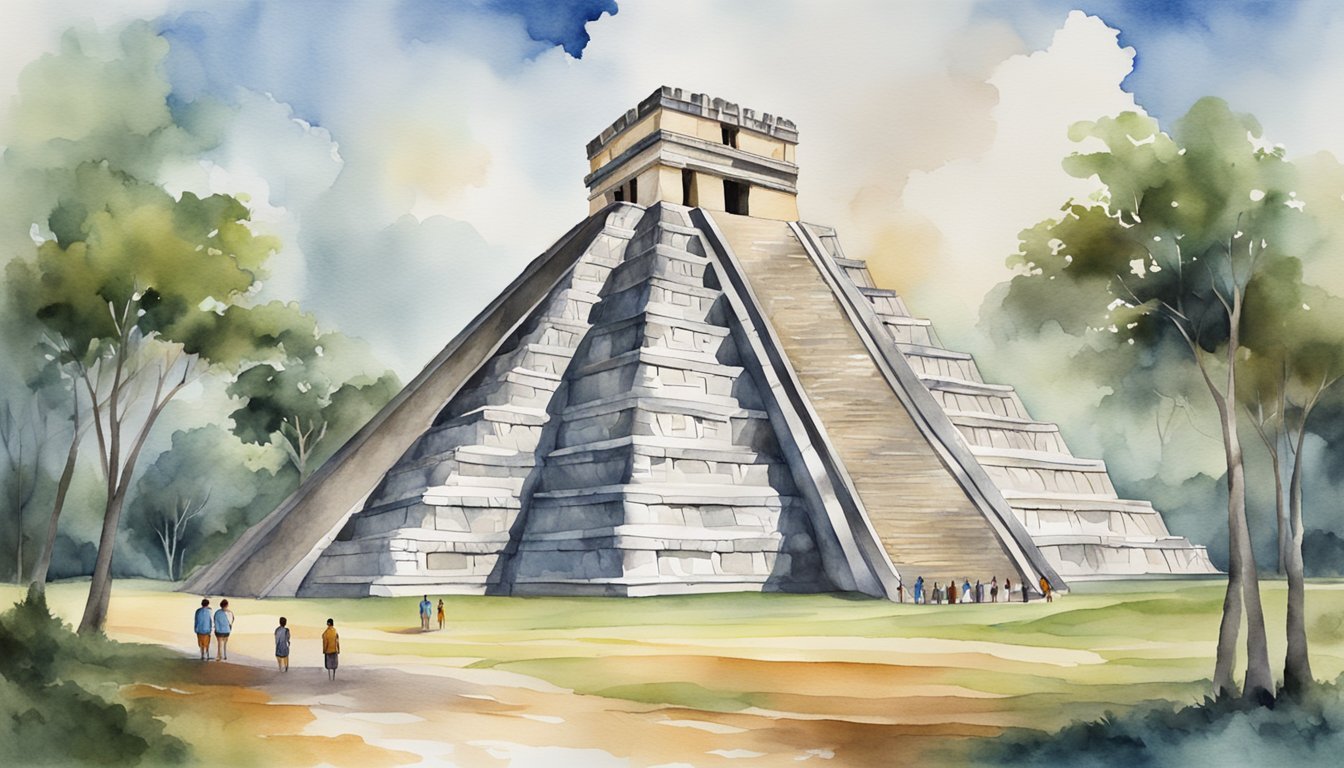History and Significance of Chichen Itza
Chichen Itza, located in Mexico’s Yucatán Peninsula, is a remarkable ancient Maya city that spans an area of 4 square miles (10 square km). It was home to both the Maya and later the Toltec civilizations and is well-known for its striking architectural and cultural features. The site became a UNESCO World Heritage Site in 1988 and was later included in the New Seven Wonders of the World.
Origins and Cultural Influence
Chichen Itza is believed to have been founded around the 6th century CE by Mayan peoples who had occupied the region since the Pre-Classic Period. In the 10th century, the city experienced an invasion by foreigners, which led to a significant Toltec influence. The fusion of Maya and Toltec cultures is clearly visible in the site’s architecture and sculptures, which often depict themes of militarism and feature imagery of jaguars and eagles.
One of the most iconic structures in Chichen Itza is the Pyramid of Kukulcan, a grand step pyramid that rises 30 meters (98 feet) high. The pyramid’s base consists of nine terraces and demonstrates the advanced mathematical and astronomical knowledge of the Maya people. During the spring and fall equinoxes, the sun casts a shadow on the pyramid, creating the appearance of a serpent slithering down its sides.
Nearby, the observatory known as El Caracol showcases the Mayan astronomers’ knowledge of celestial movements with windows aligned to the positions of significant stars and planets. The “Las Monjas” complex, featuring elaborate stone facades, is another significant structure that showcases the site’s architectural prowess.
Modern-Day Recognition and Preservation
Today, Chichen Itza is a popular tourist destination, drawing over a million visitors annually. The city’s recognition as a UNESCO World Heritage Site in 1988 highlights its critical value for humanity, as it fulfills criteria (i), (ii), and (iii) for cultural significance.
Mexico’s National Institute of Anthropology and History is responsible for the site’s preservation and has implemented various measures to ensure its protection. Some of the structures, such as the Pyramid of Kukulcan, are no longer accessible to tourists to preserve them, and conservation efforts continue to maintain the site’s integrity.
Throughout its history, Chichen Itza has not only stood as a testament to the extraordinary cultural and architectural achievements of the Mayan and Toltec civilizations but has also provided valuable insights into pre-Columbian Mesoamerican societies. Its continued preservation and recognition will enable future generations to appreciate and learn from this remarkable ancient city.
Archaeological Marvels and Structures

The Iconic Temple of Kukulkan
The Temple of Kukulkan, also known as El Castillo, is a step pyramid that stands as a testament to the Maya’s architectural prowess at Chichen Itza. Consisting of 365 steps, the temple symbolizes the days in a year on its four sides. During the spring and autumn equinoxes, the shadows cast by the sun create the appearance of a serpent, representing Kukulcan or Quetzalcoatl, the deity associated with knowledge and fertility.
Sacred and Ceremonial Sites
Chichen Itza has many sacred and ceremonial sites, including the Great Ball Court, the most extensive Mesoamerican ball court found at the site. Another significant structure is the Temple of the Warriors, characterized by its thousand columns and intricate sculptures. The sacred Cenote Sagrado, or sinkhole, reveals the ancient Maya’s spiritual beliefs—human sacrifices and offerings of jade, gold, and obsidian were made to the rain god, Chaac.
- Great Ball Court: largest Mesoamerican ball court
- Temple of the Warriors: thousand columns and intricate sculpture
- Sacred Cenote: sinkhole, human sacrifices, offerings of jade, gold, and obsidian
Astronomical and Engineering Mastery
The Maya’s mastery of astronomy and engineering is evident in several structures at Chichen Itza. For example, the Observatory, or El Caracol, showcases the Maya’s understanding of celestial movements. Its spiral staircase represents the snail shell that inspired the building’s name. The Red House, Nunnery, and other structures reveal the Maya’s architectural style, evidence of their advanced construction techniques. Chichen Itza’s powerful blend of art, science, and religion still captivates visitors today.
- Observatory (El Caracol): accurately observing celestial movements
- Red House (Casa Colorada) and Nunnery (Casa de las Monjas): examples of Puuc-style architecture
- Astronomical, engineering, and architectural ingenuity attract tourists

